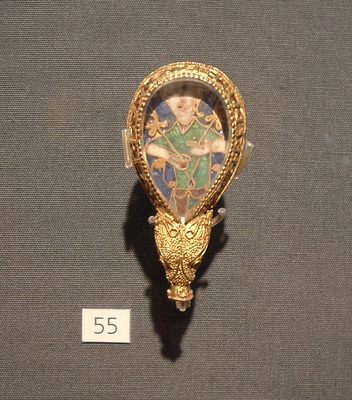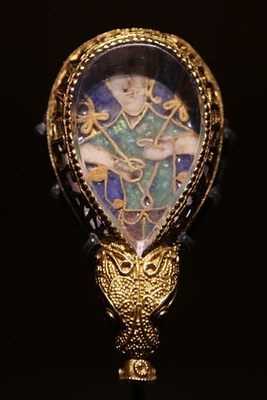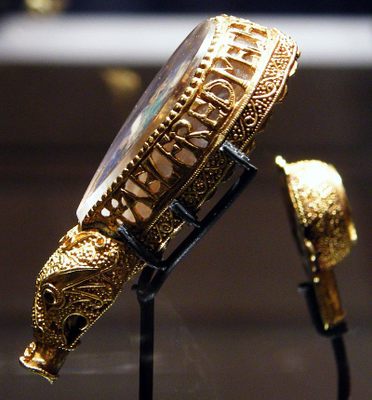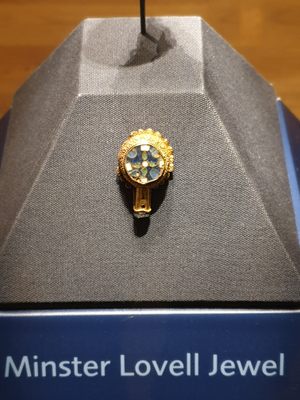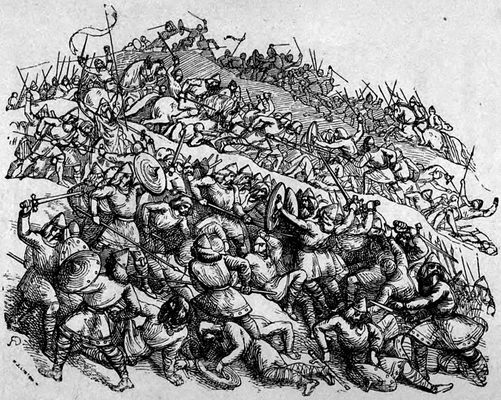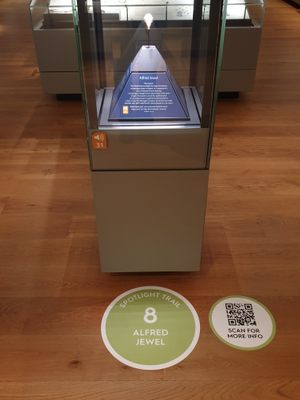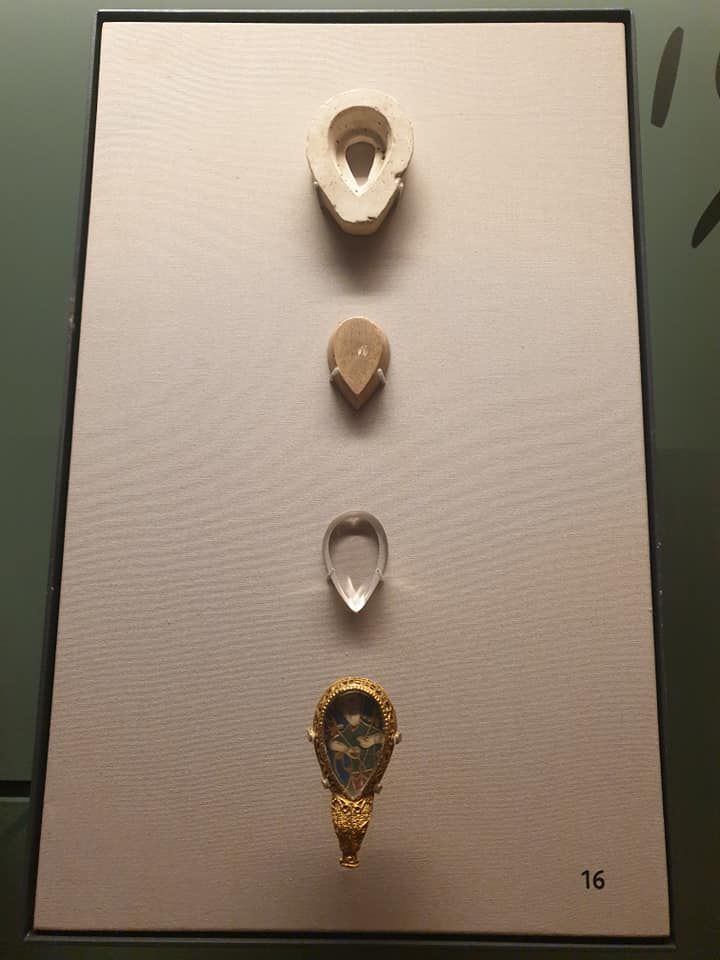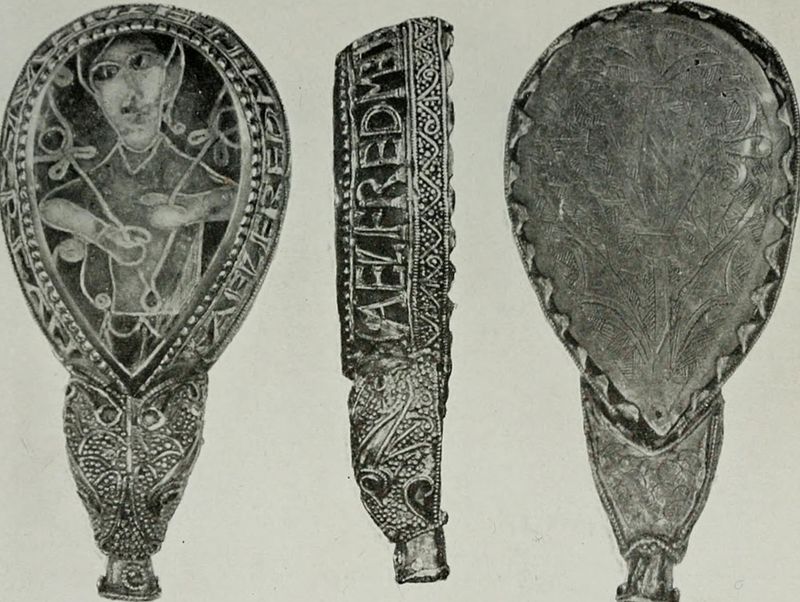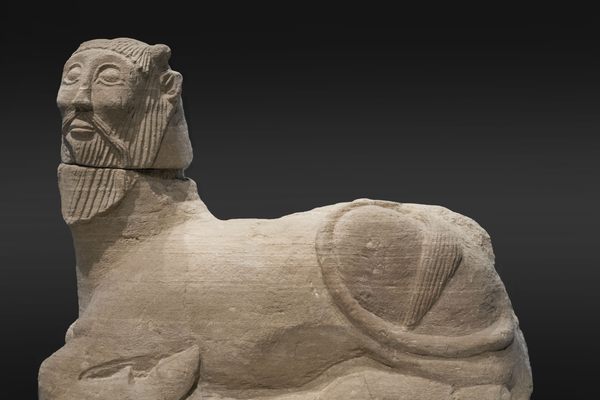About
In the darkened galleries of the Ashmolean Museum of Art and Archaeology, you’ll find an archeological treasure that, despite its diminutive size, is of priceless value to England and its history.
The mysterious crystal likeness of a man can be seen in a teardrop shape enclosed within a golden dragon-headed frame. The pale figure stares at the viewer from under his mop of golden hair and clutches what appear to be two long-stemmed plants in his hands.
The intricately carved golden dragon has a long and tapering scaled snout and the corners of its snarling mouth reveal a fanged maw. Indeed, it appears the dragon may have even been included to symbolically protect the human figure it encircles like some kind of monstrous Dark Age guard dog.
This fascinating archeological treasure is known as "the Alfred Jewel" due to the lettering that runs along its sides. The inscription reads "Aelfred mec heht gewyrcan," which translates from Old English to "Alfred ordered me to be made." These words leave little doubt that its creation was commissioned by a legendary figure in English history, King Alfred the Great.
As a young man King Alfred took the throne of Wessex after the death of his brother Aethelred in 871. As such, he also took on the daunting task of leading his people through incessant Viking invasions at a time when all of the Saxon kingdoms except Wessex had fallen under the control of the Nordic invaders.
For many years the young Alfred's life was spent on the run. During this period he lived under conditions of constant travel, never able to stay for too long at any location and being sheltered by the charity of his followers. Danger was an ever present reality with assassination attempts , spies and ambushes never too far away. Considering such pressures, it’s a wonder that Alfred never gave up.
But as resistance against the invaders grew among the Saxons, Alfred and his forces began to wage guerrilla warfare from the marshes and Fenlands harrying the Vikings at every turn. By 878, he had begun to win against his enemies, and was victorious at the battle of Edington. His troops slaughtered the Vikings and pursued the survivors to their camp in Chippenham, where they were starved out of their fortress and made to surrender.
Alfred made the Viking leader Guthrum sign a treaty and convert to Christianity, which resulted in a system demarcating the borders of England (present-day Southern England) and the Viking territory in the North of the country, which was to be known as the Danelaw. He then strengthened his army further and built a series of fortresses across the country to defend against future attacks.
Alfred was also a man with a deep respect for education. In his late 30s, he learned Latin and helped translate books into the Anglo-Saxon language and organized educational programs for his people.
The jewel probably played a role in this education, as it is believed to have been the handle for a pointing stick used to follow words when reading and teaching. The chronicles record that Alfred distributed such jewels across his kingdom.
It’s said that the jewel inspired some of the amulets depicted in The Hobbit and The Lord of the Rings, as J.R.R. Tolkien was a professor of Anglo-Saxon studies at the University of Oxford.
Related Tags
Know Before You Go
The Alfred Jewel can be found, when not on loan to other museums for exhibitions, in the brilliant Ashmolean Museum in Oxford. Entrance to the museum is free and its opening hours are 10 a.m. to 5 p.m. from Tuesday to Sunday. You will find the Jewel in the "England 400–1600" gallery where it is displayed along with many other interesting artifacts.
Community Contributors
Added By
Published
January 23, 2019
